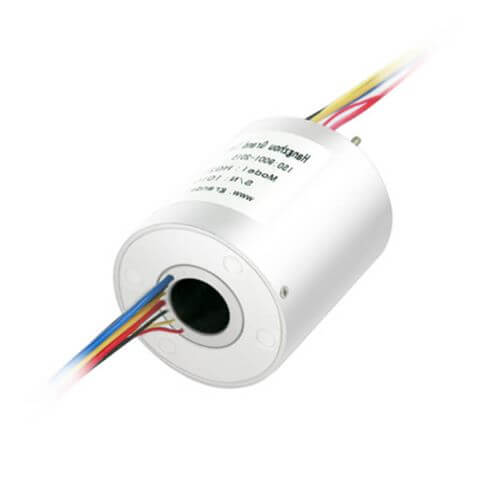In the world of electrical engineering, achieving uninterrupted power and signal transmission in rotating systems has always been a challenge. Enter the slip ring connector—a remarkable solution that enables seamless electrical connectivity in rotating interfaces. In this article, we delve into the inner workings of slip ring connectors, unraveling their mechanism and shedding light on how they facilitate the flow of power, signals, and data across rotating interfaces. Join us as we unveil the secrets behind this ingenious electrical component.
The Basics of a Slip Ring Connector
A slip ring connector, also known as a rotary electrical connector or electrical rotary joint, serves as a bridge between stationary and rotating components. Its primary function is to enable the transfer of power and signals from a stationary source to a rotating structure, ensuring continuous electrical connectivity without the need for wires or cables that would impede rotational motion.
How Does It Work?
Construction: Slip ring connectors are typically composed of several key components. The core elements include a stationary part, known as the stator, and a rotating part, referred to as the rotor. The stator is usually fixed to the stationary structure, while the rotor is mounted on the rotating component. The rotor and stator are separated by an insulating material to prevent electrical contact between them.
Conductive Rings and Brushes: The heart of a slip ring connector lies in its conductive rings and brushes. The rotor contains multiple conductive rings, each of which is electrically isolated from one another. Corresponding to each ring, the stator features brushes that make contact with the rings as the rotor rotates. The brushes are typically made of graphite or metal alloys with good conductivity and low friction.
Continuous Electrical Path: As the rotor spins, the brushes maintain constant contact with the conductive rings, ensuring a continuous electrical path. Power, signals, and data can flow from the stationary side to the rotating side and vice versa through the brushes and rings. This seamless transmission enables the smooth operation of electrical components, motors, sensors, and other devices mounted on the rotating structure.
Transmission of Power and Signals: Slip ring connectors are designed to accommodate various circuits, allowing for the transmission of power and signals simultaneously. Each conductive ring is dedicated to a specific circuit, such as power, control signals, data, or Ethernet. This arrangement ensures efficient and reliable transmission of multiple electrical channels through a single slip ring connector.
Applications and Benefits
Slip ring connectors find application in numerous industries and systems that involve rotational motion and require continuous electrical connectivity. Some notable applications and benefits include:
Robotics and Automation: Slip ring connectors play a crucial role in robotics and automation, enabling electrical connectivity in robot joints, robotic arms, and other movable components. They facilitate the transmission of power and control signals, enhancing the precision, flexibility, and range of motion in robotic systems.
Wind Turbines: In the renewable energy sector, slip ring connectors are essential for wind turbines. They allow the transfer of power from the rotating blades to the stationary components, ensuring continuous energy generation and optimizing wind turbine efficiency.
Surveillance Systems: Slip ring connectors are utilized in surveillance systems with rotating cameras. They enable seamless transmission of power, control signals, and video data, facilitating uninterrupted monitoring and surveillance operations.
Broadcasting Equipment: Slip ring connectors find application in broadcasting equipment, such as camera rigs and mobile broadcast units. They enable the transmission of power, signals, and data between stationary broadcasting equipment and rotating cameras or antennas, ensuring uninterrupted live broadcasts.
Slip ring connectors are a vital component in achieving seamless electrical connectivity in rotating systems. Their ingenious mechanism, consisting of conductive rings and brushes, allows for continuous power and signal transmission across rotating interfaces. From robotics to wind energy and broadcasting, slip ring connectors enable the smooth operation of electrical components and devices in various industries. By understanding how slip ring connectors work, engineers and designers can harness their capabilities and unlock new possibilities for seamless electrical connectivity in a wide range of applications.
See What We Can Do

